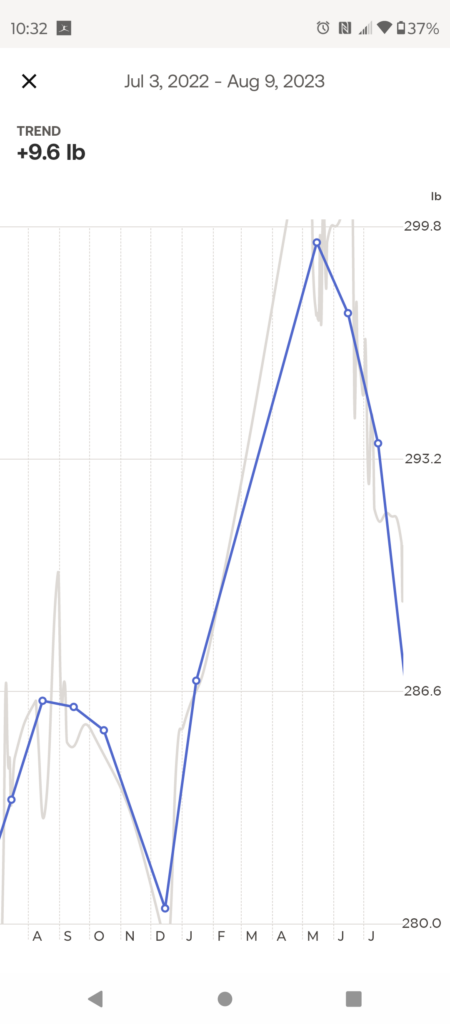On some level, I’ve started to hate writing these blog posts.
The original intent was to show the ups and downs of being a consultant, inspired by Brent Ozar’s series on the same thing. There’s a huge survivorship bias in our field, only the winners talk about self-employment, and the LinkedIn algorithm encourages only Shiny Happy People. But when you enter the third consecutive year of the 3 most difficult years of your career, you start to wonder if it might be a you problem. So here we go.

Pivoting my business
Two years ago, Pluralsight gave all authors a 25% pay cut and I knew I needed to get out. I reached out to everyone I knew who sold courses themselves for advice. I’m deeply grateful to Matthew Roche, Melissa Coates, Brent Ozar, Kendra Little, and Erik Darling for the conversations that calmed my freak out at the time.
One year ago, I learned that I can’t successfully make content my full-time job while also successfully consulting. Consulting work tends to be a lot of hurry-up-and-wait. Lots of fires, emergencies, and urgencies. No customer is going to be happy if you tell them the project needs to wait a month because you have a course you need to get out. Previously with Pluralsight I was able to make it work because they scoped the work, so it was more like a project. Not so when hungry algos demand weekly content.
So, I cut the consulting work to a bare minimum. Thankfully, I receive money enough from Pluralsight royalties that even with the cut we never have to worry about paying the mortgage. However, it’s nowhere close to covering topline expenses. At the beginning pandemic, $6k/mo gross revenue was what we needed to live comfortably (Western PA is dirt cheap). After the pandemic, I hired a part time employee, inflation happened, and I pay for a lot more subscriptions, like Teachable and StreamlineHQ, so that number is closer to $9k/mo now.
I can confirm that I have not and never will make $9k/mo or more from just Pluralsight. My royalties overall have been stagnant or even gone down a bit since the huge spike upwards in early 2020. So it’s not enough to live off of alone.
Finally, after a lot of dithering in the 2023, I decided to set a public and hard deadline for my course. We were launching in February 2024 hell or high water. I launched with 2 out of 7 modules and it was a huge success, making low four figures. I’m grateful to everyone who let me on to their podcast or livestream, which provided a noticeable boost in sales.
Unfortunately, I had a number of projects right after launch, taking a lot of my focus. I also found out that this content was much much more difficult than the Pluralsight content I was used to. There was no one from curriculum to hand me a set of course objectives to build to. No one to define the scope and duration of the course.
What’s worse, the reason there is a moat and demand for Power BI performance tuning content is almost no one talks about it. You have dozens of scattered Chris Webb blog posts, a book and a course from SQL BI, a course by Nikola Illic, and a book by Thomas LeBlanc and Bhavik Merchant. And that’s about it?
I thought I was going to be putting out a module per week, when in reality I was doing Google searches for “Power BI Performance tuning”, opening 100 tabs, and realizing I had signed myself up for making 500 level internals content. F*ck.
A summer of sadness
All at the same time I was dealing with burnout. My health hadn’t really improved any over the past 3 years and I was finding it hard to work at all. I was anxious. I couldn’t focus. And the content work required deep thought and space and I couldn’t find any. I felt a sense of fragility where I might have a good week the one week and then have a bad nights sleep and derail the next week.
I hadn’t made any progress on my course and a handful of people reached out. I apologized profusely, offered refunds, and promised to give them free access to the next course. If you were impacted by my delays, do please reach out.
In general, I decided that I needed to keep cutting things. I tried to get any volunteer or work obligations off my plate. The one exception is I took on bringing back SQL Saturday Pittsburgh. With the help of co-organizers like James Donahoe and Steph Bruno, it was a lot of work but a big success. I’m very proud of that accomplishment.
Finally turning a corner
I think I finally started turning a corner around PASS Summit. It was refreshing to see my friends and see where the product is going. Before Summit, I had about 3.5 modules done. In the period of a few weeks I rushed to get the rest done. This was also because I really wanted to get the course finished for a Black Friday sale.
The sale went well, making mid three figures. Not enough to live on, but proof that there is demand and it’s worth continuing instead of burning it all down and getting a salaried job. Still, I recently had to float expenses on a credit card for the first time in years, so money is tighter than it used to be. Oh the joys of being paid NET 30 or more.
Immediately after Black Friday, I went to Philadephia to delivery a week long workshop on Fabric and Power BI. The longest training I had ever given before was 2 days. The workshop went well, but every evening I was rushing back to my hotel room to make more content. You would think that 70 slides plus exercises would last a whole day, but no, not even close.
Now I’m back home and effectively on vacation for the rest of the year and it’s lovely. I’m actually excited to be working on whatever whim hits me, setting up a homelab and doing Fabric benchmarks. It’s the first time I’ve done work for fun in years.
I’m excited for 2025 but cautious to not over-extend myself.




